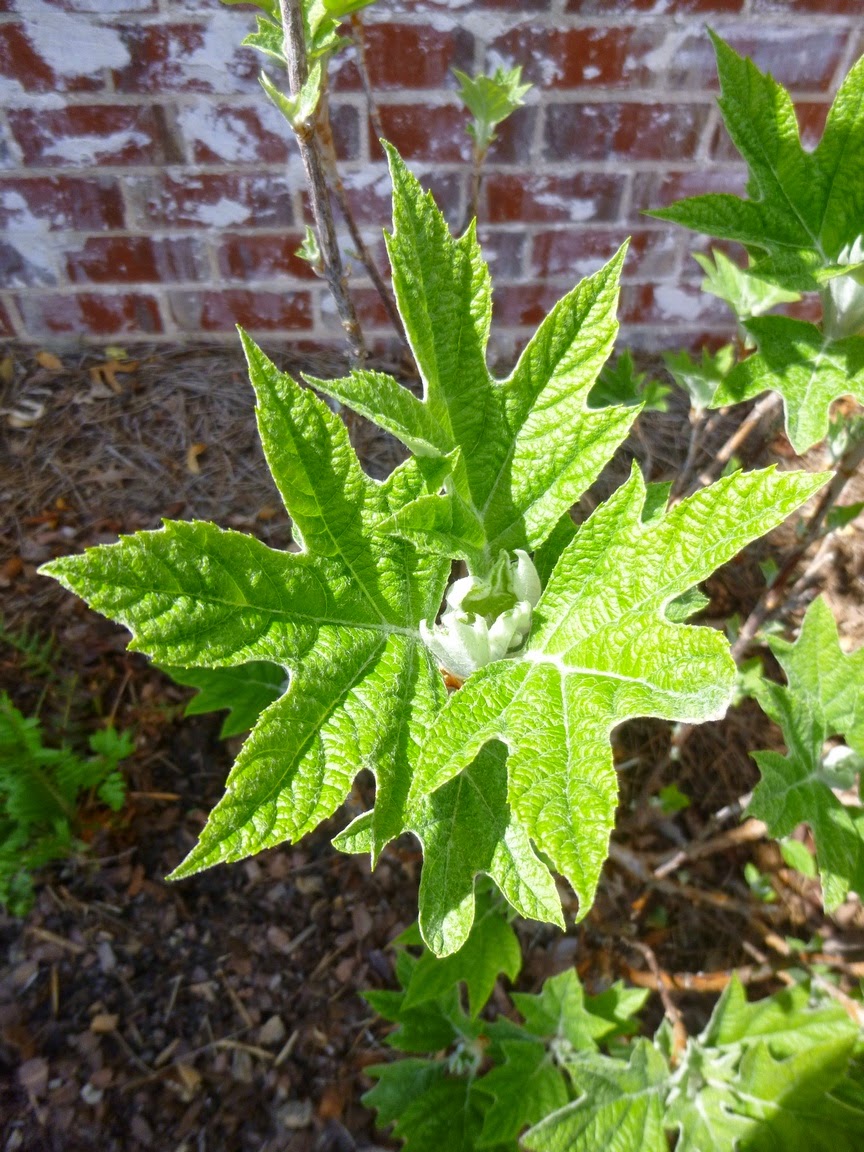 |
| Creeping raspberry vines do not appreciate -2 Fahrenheit temperatures. This plant seems to have died back to the roots and the new foliage is emerging from below ground. |
Do you ever have a plant that crushes your hopes and dreams?
OK, maybe that's a little melodramatic, but I was sure I'd found the groundcover of my dreams when I read descriptions of Creeping Raspberry or Crinkle-Leaf Creeper (a.k.a. Rubus hayata-koidzumii, Rubus calycinoides or Rubus pentalobus). I should have known better than to trust a plant with so many aliases!
I was under the impression that Creeping Raspberry would make a solid weed-suppressing evergreen groundcover with the benefit of some flowers and even a few edible berries in springtime. It did relatively well in my garden last year - well enough for me to add another plant last autumn.
I should have known better.
Reviewing my sources, I see that the people and organizations praising Creeping Raspberry as an evergreen groundcover are one to one-and-a-half zones warmer than me gardening in places like Statesboro, Georgia (zone 8a) and Clemson, South Carolina (zone 8a).
Here in my zone 6b/7a garden (low temperature -2 Fahrenheit this past winter with no insulating snowcover to soften the blow), Creeping Raspberry apparently acts like an herbaceous perennial - dying back to the roots and slowly emerging in early April.
 |
| Creeping Raspberry tentatively steps back onto the stage |
Maybe I should be grateful rather than exasperated?
After all, even though some sources do list Creeping Raspberry as being hardy to zone 6, there are others that only rate the plant for zone 7 or above. Alabama's Cooperative Extension System recommends Creeping Raspberry except in the northeast corner of the state, where it acknowledges that winter hardiness can be a problem.
Well, northeast Alabama (perhaps the Huntsville area?) is still solidly in zone 7a - I'm guessing at least a few degrees warmer than my Middle Tennessee garden on most winter nights. If the extension service is worried about Creeping Raspberry surviving in Huntsville, I guess I was inadvertently pushing my luck in the Nashville area.
So, will I pull the plants from the garden? I don't think so. I think it's just a matter of recalibrating my expectations.
After all, I believe the meteorologists said last winter was the coldest winter here in 20 years. Perhaps in a gentler winter where lows dip "only" into the single digits or a warm winter where temps stay in the teens, Creeping Raspberry's vines will survive and the plant will act more like an evergreen groundcover?
And even if it does die back to the roots, how is that any worse than other groundcovers I enjoy - like Rozanne Cranesbill Geranium, Lamb's Ear or Lady's Mantle? (Although I will say that all three of these alternates spring from the ground much more quickly in the spring and all are rated to hardy to zones 4-5.)
For now, I've scrapped any plans to add additional Creeping Raspberry plants to the garden, but I do look forward to seeing how/whether the three Creeping Raspberry plants recover in 2014.
Meanwhile, I have a choice - I could be envious of all those gardeners in slightly warmer zones whose gardens are apparently better suited to so many of the plants I'd love to grow (not just Creeping Raspberry, but everything from Camellia and Choisya ternata to Loquats and Japanese Persimmons).
But gardening reminds us of an important life lesson - we can lament the things we lack, or we can be grateful for whatever beautiful treasures we are privileged to experience.
 |
| Aronia arbutifolia buds stretch out in preparation to bloom |
 |
| An unknown Camellia japonica survived the winter to bloom with exuberance |
 |
| Native Oakleaf Hydrangea (Hydrangea quercifolia "Snowflake") leaves embrace the sunshine |